 Cover Stories
Cover Stories
“History is a set of lies agreed upon.” — Napoleon Bonaparte
For 70 years, John Morris, former London Picture Editor of LIFE magazine, has worked tirelessly at the self-assigned task of persuading the world that on June 7, 1944, in the darkroom of LIFE‘s London office, the brief shutting of the doors of a heated makeshift film-drying cabinet by one Dennis Banks, an overzealous teenage la bassistant, destroyed all but eleven frames of Robert Capa’s D-Day films from Omaha Beach. (Click here for links to assorted versions of Morris’s story.)
I no longer believe a word of it. I’m embarrassed that I did for so long, and amazed that it’s gone unchallenged for seven decades. But it no longer matters, because whatever caused the complete loss of three of Capa’s rolls of 36-exposure 35mm film and 2/3 of the fourth roll, none of that film — according to the photographer’s own caption notes and the data encoded in the remaining negatives themselves — contained any further images of the landing at Omaha Beach. What got lost, indisputably, consisted merely of human-interest stock shots made on board the U.S.S. Samuel Chase the night before — images that might flesh out the Capa oeuvre but have no major historical importance.
Let me make my position unequivocal. Based on the test I ran myself in a film-drying cabinet, the remaining physical evidence as shown in the recent TIME video, input from professionals in the field (including some who worked with the materials of that period), and the accounts of Capa and Morris, I come to the following conclusions:
- On D-Day, Robert Capa arrived at Omaha Beach around 7 a.m, at the same time as the 2nd wave of troops, eager to push through the beach clearings already made by the combat engineers. Over the course of the next half-hour he made only 11 exposures, all of them successful. He then panicked and raced for a landing craft, as witnessed by Pfc. Huston Riley, whose image he had just captured in his penultimate frame. By 8:00 he was aboard a hospital evacuation ship heading to Weymouth, England.
- The remainder of his exposed film failed due to overexposure, a result of elementary operator error, not the improbably sudden, catastrophic “emulsion melt” propounded by Morris and Capa, which is unique in the history of the photography of that period. Elementary forensic testing can prove one or another of these narratives; simple microscopic scrutiny would tell us whether the standard pattern of silver particles in the emulsion has become uncharacteristically disrupted, which could signify melting. What some see as downward slide of the emulsion due to heat could constitute nothing more than the effect of an abnormal or enlarged film gate. This too can get verified; if true, that effect would appear on negatives Capa made with that same camera after D-Day, perhaps before as well.
- The myth of melted negatives in the London darkroom was concocted on the spot by John Morris, to hide Capa’s abject failure to deliver the goods as promised when the chips were down. Capa’s images became famous not because they were “the best of the invasion,” as he claimed in 1947, but because they were the only ones of the initial landing to get worldwide distribution. They don’t match the quality of his other work. As he himself said, “If your pictures aren’t good enough, you’re not close enough.”
Saving the Appearances
I don’t make any of those statements lightly. A great many people have bought into this legend over the past seven decades, at least to the extent of turning a blind eye to its multiple improbabilities. I don’t expect them to take kindly to this debunking. I don’t take kindly to their participation — active in some cases, passive in others — in the 70-year conspiracy to camouflage Capa’s D-Day fiasco.
Even on June 6, 1944, many people had invested deeply, both personally and professionally, in the legend of Robert Capa: not just Capa himself but John Morris, Wilson Hicks (LIFE‘s head picture editor), LIFE magazine, the Time-Life corporation. That roster increased exponentially from then on, adding both individuals and institutions: the Magnum picture agency and the International Center of Photography in New York; Cornell Capa, founding director of the ICP; Richard Whelan, authorized Capa biographer and Consulting Curator of the Robert and Cornell Capa archives at the ICP; and Cynthia Young, current curator of those archives.
Then we have others, including so many who, taking Capa and Morris at their word and accepting uncritically their dubious narrative, have helped to propagate it. That list would include, just in the past few years, Robert Pledge of Contact Press Images, Marie Brenner at Vanity Fair, Simon Kuper of the Financial Times, filmmaker Douglas Sloan of “Eleven Frames,” and filmmaker Cathy Pearson of “Get the Picture.” Capa may qualify for John Hersey’s 1947 description of him as “The Man Who Invented Himself,” but he surely has had lots of help over the decades.
Not until the 2014 TIME video showed prints made from some of the purportedly heat-damaged frames did anyone with basic photographic savvy but outside the circle of beneficiaries of the Capa myth have a chance to examine samples of the film in question (or reproductions thereof) and raise basic questions about the bizarre explanation of them that by then had entrenched itself in the lore of the field and the public mind.
Making Lemonade
Assuming that J. Ross Baughman’s reading of the story and the materials, and mine, and those of several experts on whom I’ve called for opinions proves plausible, why would John Morris create such a confabulation?
On a strictly human level, consider Morris’s plight. His dear friend, the man he calls “my Hungarian brother,” a superstar of wartime photojournalism, had choked in the clutch, muffing a crucial assignment in an embarrassingly amateurish way. First, Capa tucked his tail between his legs and ducked out of the Normandy invasion after thirty minutes or less on the battlefield. Second, he returned from the landing and initial bombardment and firefight with a mere 11 exposures, only one of them even barely memorable.
Then, on the professional level, we have the terrible publicity that would result were it known that LIFE‘s point man had fumbled the ball so badly. This would have made everybody look bad — not just Capa but Morris, the picture editor who chose him for that assignment — and it would have affected the reputation of the publication itself.
What to do? Admit the truth and do serious damage to Capa’s international reputation, turning him into the war photographer who screwed up on D-Day and killing his dream of the coveted staff slot on LIFE for which he yearned? While also placing an indelible blot on the escutcheon of LIFE, which prides itself on leading the pack? Or concoct a fiction about an overzealous teenager, an overheated drying cabinet, and melted emulsions, quickly eliminating the physical evidence to the contrary in the mad scramble to get those few images printed and shipped by deadline — hoping that Wilson Hicks would find the “salvaged” negatives sufficient?
The latter seems the only rational decision. (Mind you, I’m assuming that Banks existed, which remains unproven.)
No eyewitness testimony supports Morris’s account of the damaging of Capa’s negatives post-processing. Neither of the two parties Morris cites as involved — Dennis Banks, the lab assistant who supposedly developed the films, and Hans Wild, the LIFE photographer who, Morris states, supervised Banks and viewed the negatives while still wet — ever corroborated it on the record. Nor did any of the three other LIFE darkroom staffers on hand that night.
None of the remaining physical evidence (the surviving exposures and frames of supposedly heat-damaged film from the same roll) gives any unmistakable visual indication of catastrophic emulsion melt; indeed, it suggests a very different cause for the lost images. And no one with expertise on the subject of Kodak films and emulsions finds Morris’s account at all credible; to the contrary, without exception they impeach it.
You Can Believe It if It Helps You to Sleep …
By the time Capa returned to London the story had become a fait accompli; he’d have to live with it from then on. What choice did he have? Too many people at too many levels had staked their reputations on Morris’s version, and Hicks’s.
Did Capa ever learn the truth? Certainly Capa knew enough about photography to recognize drastic overexposure in the few “damaged” frames that got preserved. Did Morris ever tell him what actually happened? Or did he just guess it for himself? Does a confession to that effect lie buried in the apocryphal statement attributed to him sometime in July 1944 — “I would never have worked for LIFE again if they had fired Dennis Banks for ruining my negatives”?
At the end of his 1998 account of this episode, Morris wrote,
Just after LIFE‘s Saturday-night close, the editors cabled,
TODAY WAS ONE OF THE GREAT PICTURE DAYS IN LIFE’S OFFICE, WHEN CAPA’S BEACHLANDING AND OTHER SHOTS ARRIVED.
I could only think of the pictures lost. How was I going to face Capa?
“I don’t think Capa ever fully forgave me,” Morris said more recently. But forgave him for what? The loss of the films, or the promulgation of an alibi with which he’d have to live thenceforth?
Wilson Hicks, LIFE‘s head picture editor, seems to have accepted Morris’s fiction as fact. His cable to Capa attributing the “damage” to seawater — and the planted line in LIFE’s June 19 D-Day story about Capa’s cameras getting “thoroughly soaked” — was intended to keep Capa on good terms with LIFE at least until he returned to London.
There Hicks would have expected him to hear the “melted emulsion” story, but Hicks had a consolation prize waiting: the staff position at LIFE that Capa had long sought, at a then-munificent salary of $9000 per year, with expense account and other benefits. Doubtful that Hicks would have made that offer if he knew the truth about Capa botching the assignment.
In his 2013 interview for the Financial Times, wherein Morris recounts the melted emulsion fiction yet again, Simon Kuper writes, “Morris is the man to disentangle Capa and his war photography from the Capa myth.” Maybe so. But the evidence indicates that Morris has labored indefatigably these past 70 years to construct and shore up that myth, perpetuating it to this day. The task of disentangling the man from the myth falls to others, it seems. Perhaps we can start here.
… Overexposure Works Just Fine for Me
What’s most poignant, in my opinion, is this: All the evidence necessary to impeach the story that Morris and Capa and these others have told all these years — the story that Capa tells in his 1947 memoir Slightly Out of Focus and Morris has retold endlessly, most recently in “Behind the Photo: Robert Capa’s D-Day,” the brief TIME video from May 29, 2014 — is presented as visual imagery in that same video. But it goes by too fast to analyze. You simply have to stop the flow of the video, freezing time by turning it into a set of still photographs, in order to read the images and words carefully. Then it becomes a confession.
Now that’s irony.
One final thought: In Slightly Out of Focus, Capa writes. “I joined the 9th Infantry Division for the attack [on Cherbourg,which began on June 14]. … The division took pillbox after pillbox. My nerve came back and I took a lot of pictures of close fighting.” I can’t help wondering if living not only with his momentary failure of nerve on Omaha Beach but also with the monumental lie about his work that day kept Capa going back to various fronts to prove himself, and thus contributed to his death in Vietnam in 1954.
•
Postscript: Shortly after this last post went out, I received the email announcement below:
•
Note: My thanks to J. Ross Baughman, whose challenge to this myth touched off my own investigation. I dedicate this series of posts to Dennis Banks, wherever he is, dead or alive (and assuming that he actually exists), who has borne this false accusation of catastrophic ineptitude for 70 years — and to all those darkroom assistants everywhere, named and unnamed, who for the past 175 years have taken the rap when photographers screwed up their exposures.
•
(For an index of links to all posts in this series, click here.)
[Note: Subsequent research by Rob McElroy revealed that all supposed examples of Capa’s “damaged” D-Day negatives published in the May 29, 2014 TIME video, such as the one above (*), were forgeries produced by Magnum in collusion with the International Center of Photography. While this renders irrelevant the above analysis of those frames, it does not undermine my broader challenge to the “melted emulsion” narrative. — A. D. C.]
•
John Morris will participate in a conversation with Robert Pledge, founder and director of Contact Press Images, at the International Center of Photography on June 24, 2014. They’ll stream it, so you can watch it live online at www.icp.org/live. Clicking on that link will enable you to submit a question in advance.


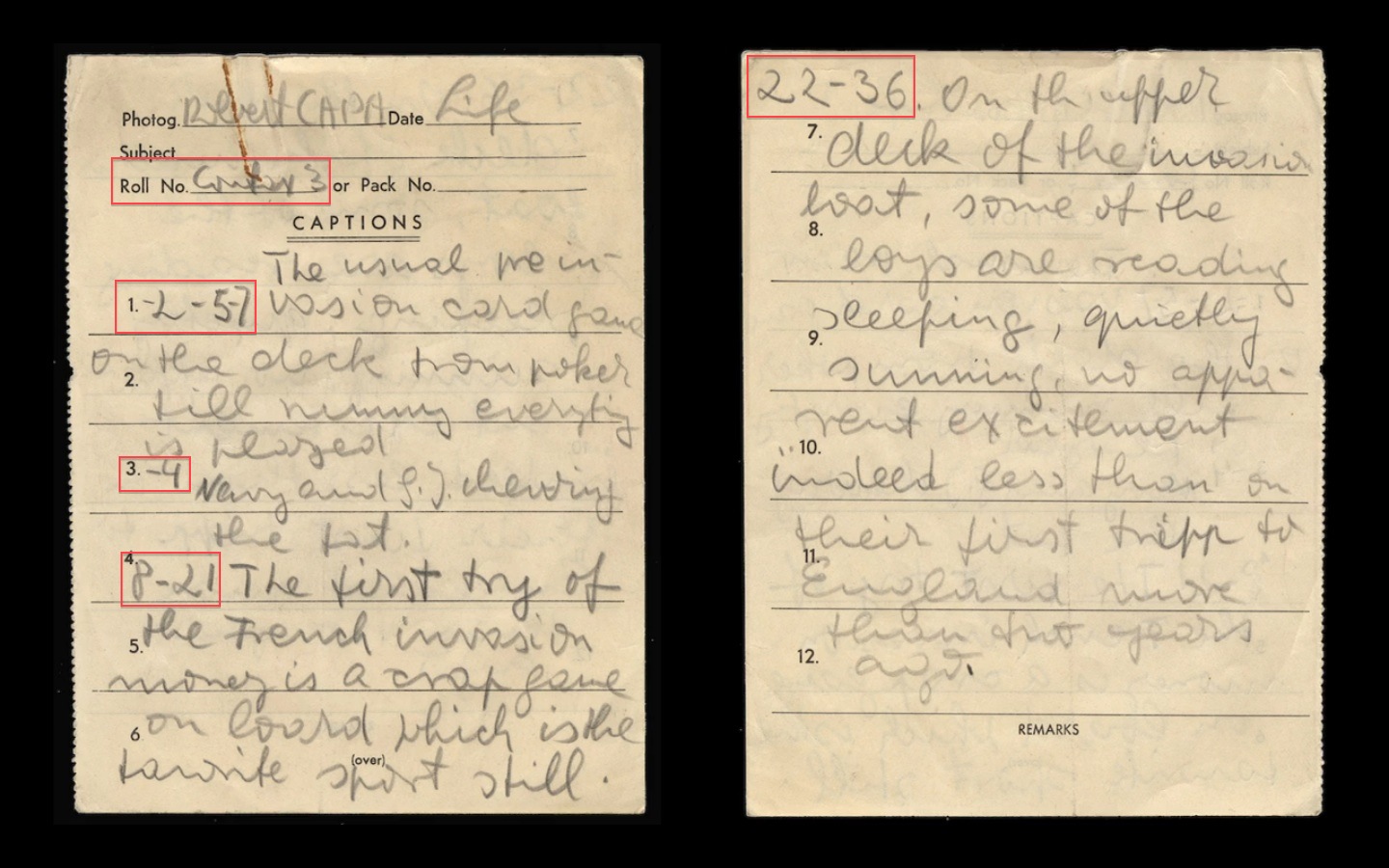
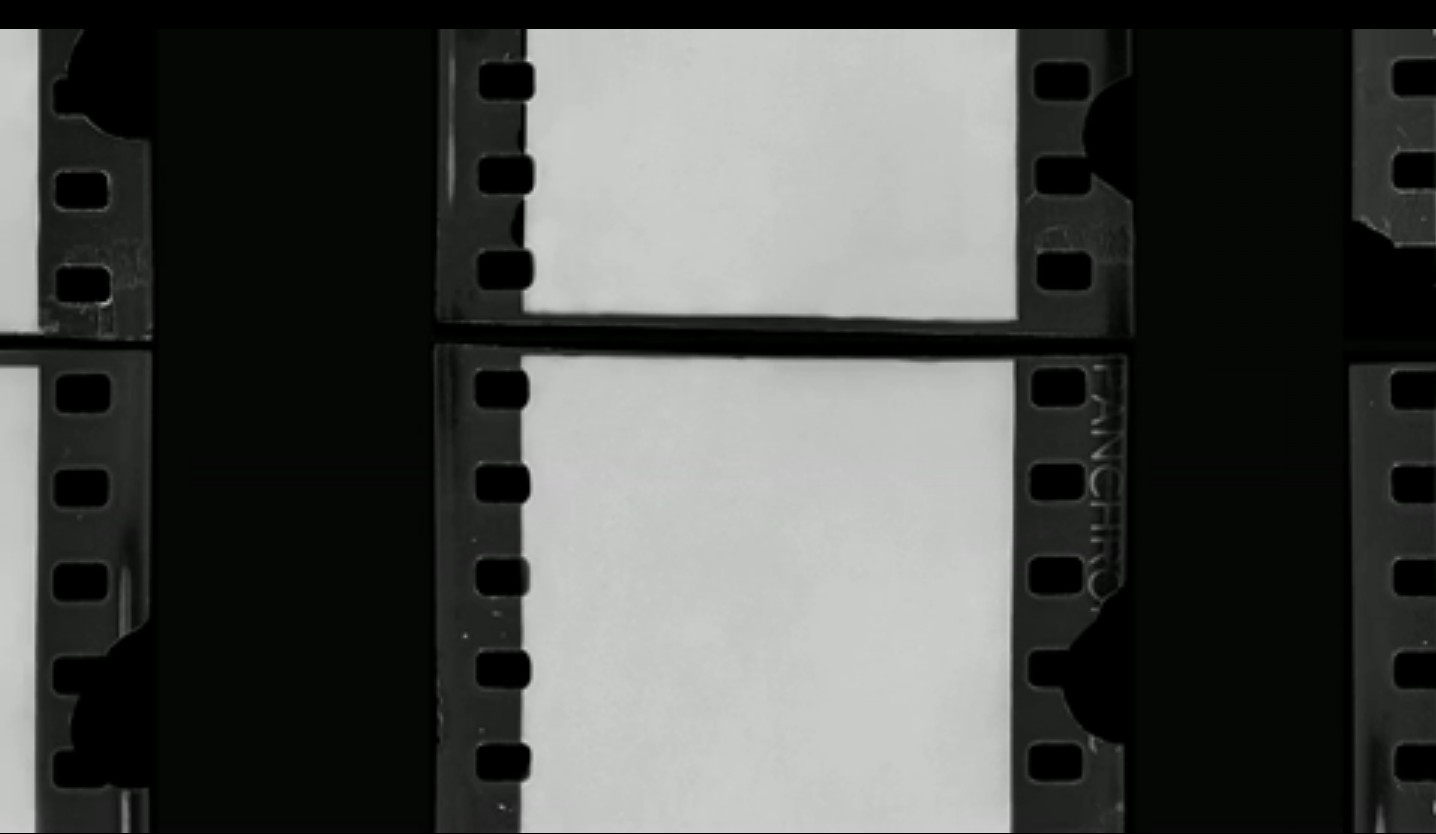
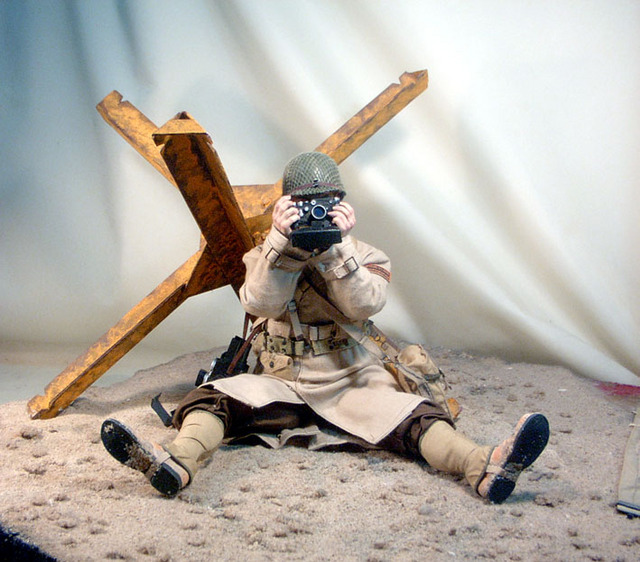
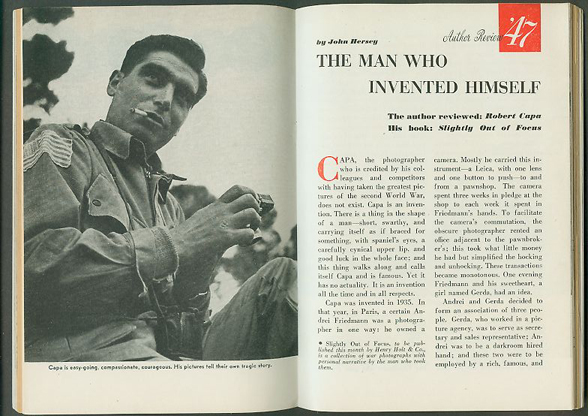
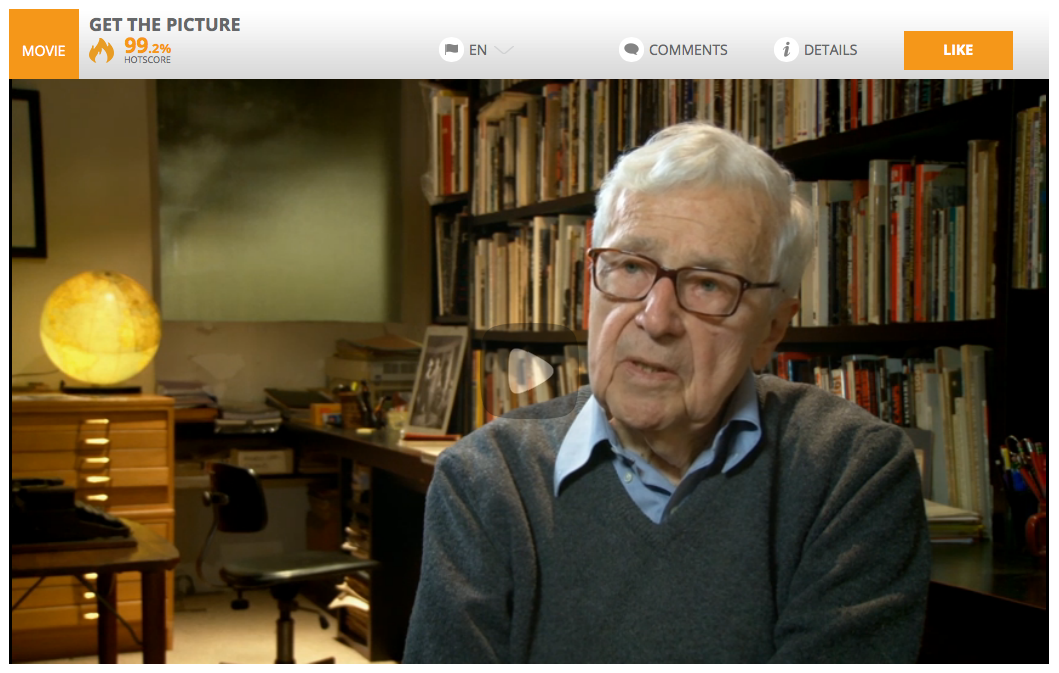
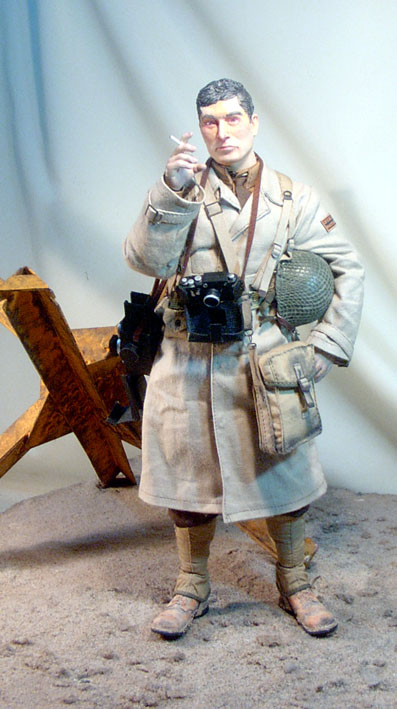
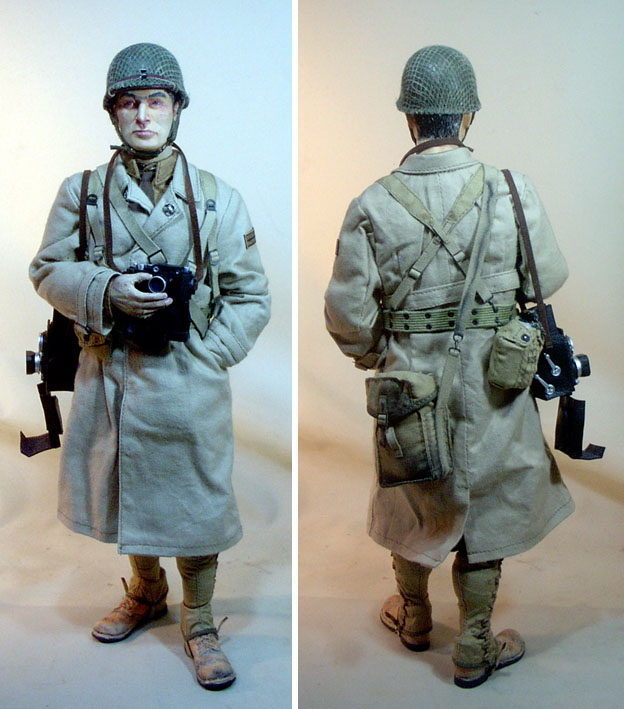
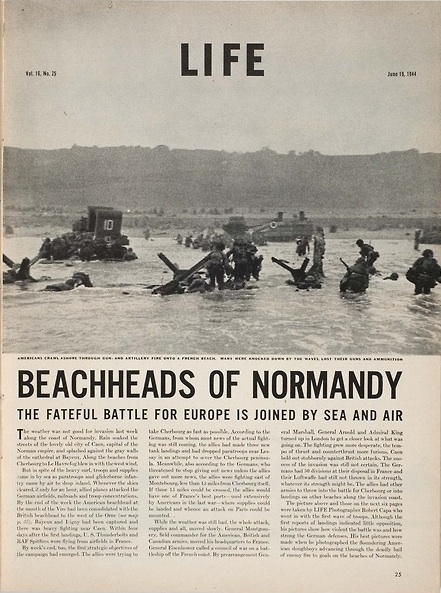
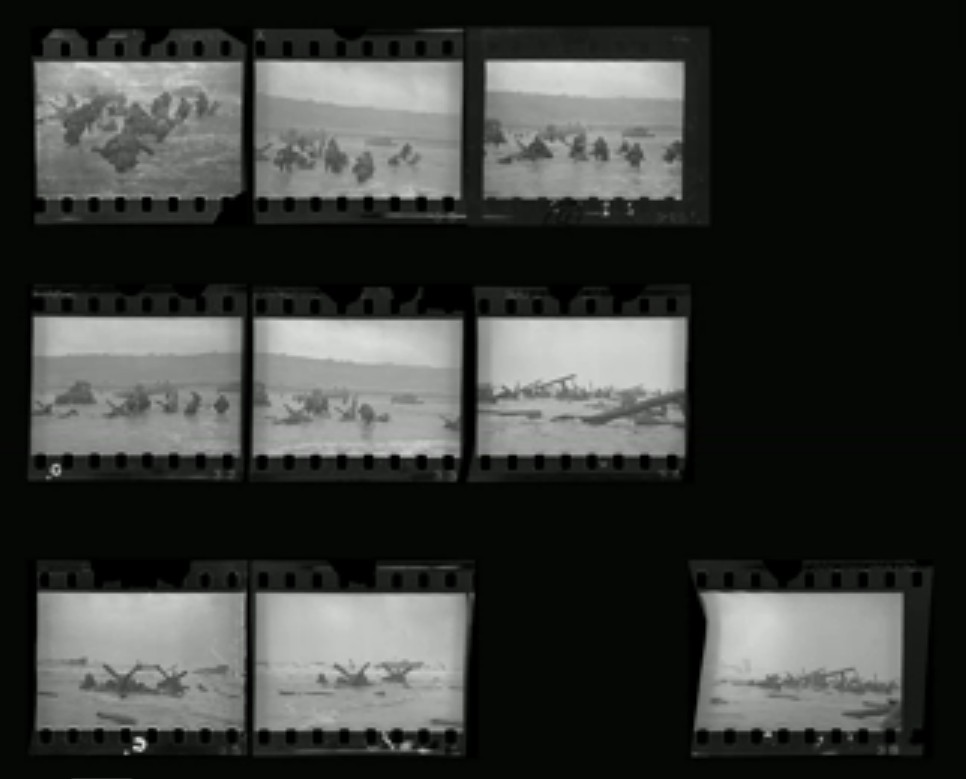
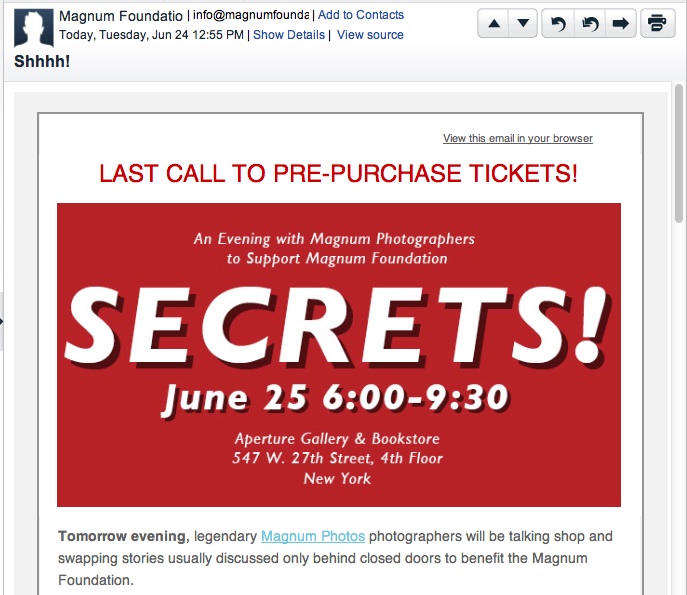




I love it when people talk about “his momentary failure of nerve on Omaha Beach” when most of us would have a very hard time even doing what he did for one minute.
I merely paraphrased Capa’s own self-judgment. In fact, he’s much harsher on himself in his 1947 memoir, in which he calls himself a “coward.’
The point of this series of posts is not to castigate Capa for a panic attack that’s entirely understandable on a human level, but to deal with it as a professional action with professional consequences and implications — and to unravel the tangle of omissions, misdirections, half-truths, and outright falsehoods that those involved in the Capa mythology have wrapped around that moment. With the goal of better understanding Capa as he actually was, warts and all.
The insinuation that anyone who sets off on a challenge most would not undertake thereby somehow rises above criticism is nonsense.
I love it when people like you think it appropriate to make public comments on bylined articles without giving their own full names, even though this blog’s protocols require identifying yourself. So I’ve gone to the trouble of tracking you down, making you accountable for your opinions, like everyone else who publishes here at Photocritic International.
Capa’s gifts as a photographer are indisputable. His photographs of D-Day meant he was there, he took the images, in battle, under fire. He admits he panicked and left. The story, true or false, about the lost images does not detract in the slightest from his bravery and his accomplishments that day. Your article, though of interest, is a quibble. He was there. He got the photos. The end.
If this truly represented only “a quibble,” then his picture editor, John Morris, would not likely have felt it necessary to go on Christiane Amanpour’s CNN and recant the fiction he concocted and promulgated for 70 years. The National Press Photographers Association wouldn’t have felt in necessary to breach professional ethics by publishing a 7200-word defense of Morris and Capa. And our team wouldn’t have won a Society of Professional Journalists award for this research.
The fact that Capa was there and made those photos doesn’t end the story; it only begins it.